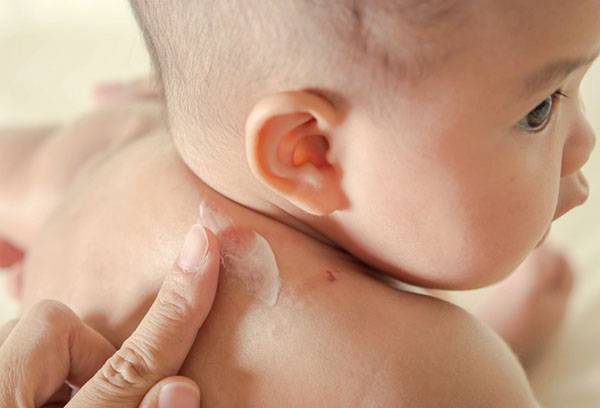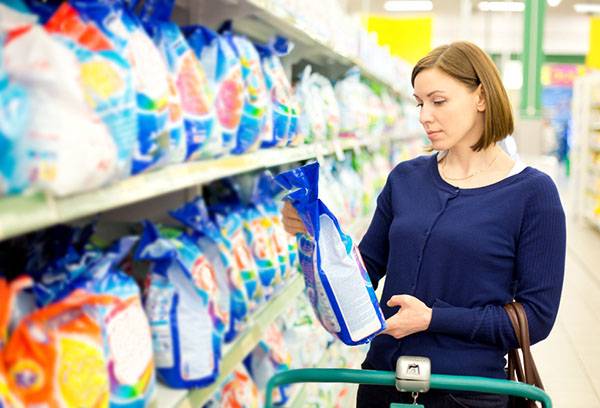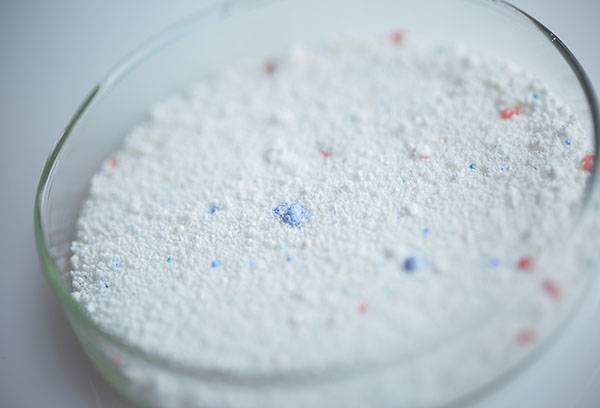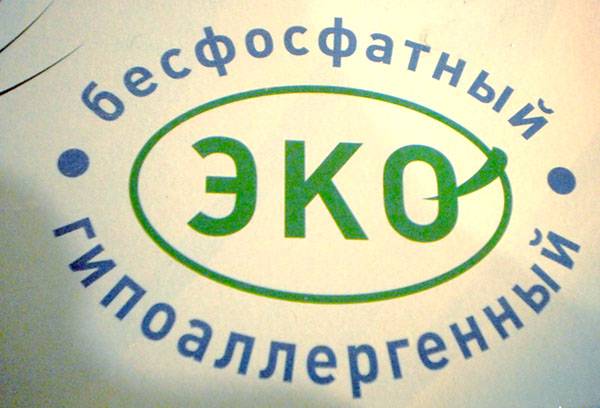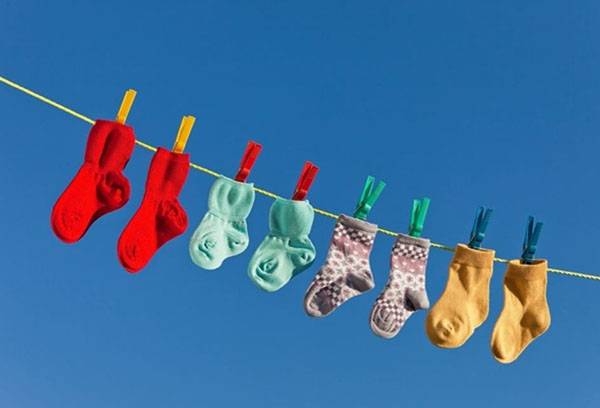What should not be included in hypoallergenic baby powders?
For the arrival of the baby, the expectant mother must prepare well: choose a stroller and crib, choose the first clothes and even decide how to wash tiny things. Hypoallergenic baby powders are best suited for this purpose. They are the safest, so rashes and irritation will not appear on the baby’s delicate skin.
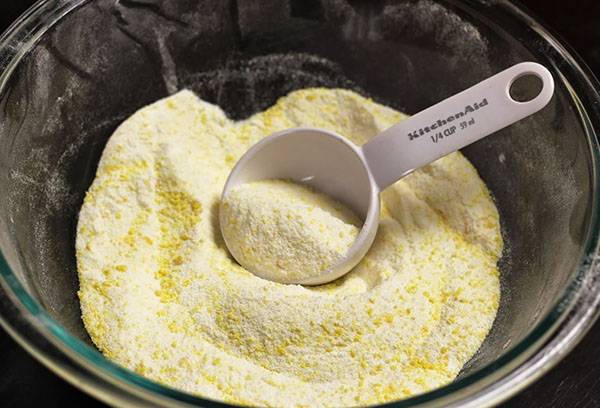
Harmful substances in powders
Not everyone, when purchasing detergents, thinks about how harmful they are. The main criterion for assessing quality is usually the ability to remove even heavy dirt. Meanwhile, the vast majority of powders contain controversial components.
- Surfactants, that is, surfactants. They provide the main effect of the powder and greatly facilitate the washing process. This is their advantage, but they have a negative effect on the human body.
- Phosphate compounds. Used to soften hard water. They also enhance the effect of surfactants – both on dirty laundry and on the body.
- Bleaching agents return things to their original shade.
- Artificial flavors and colors. They are used to make the powder have an unusual appearance and to make clothes smell fragrant after washing. But they are not very good for health.
The peculiarity of these components is that tiny particles remain on bedding and clothing. When used, they enter the circulatory system through the skin and are distributed throughout the body, affecting a variety of organs.The kidneys and liver that suffer the most are the ones that filter out harmful substances.
This problem is relevant even for adults. In children, with their delicate skin and developing immune system, negative reactions occur much more often. This is why it is important to choose a hypoallergenic laundry detergent. First of all, this applies to babies in their first year of life; they are more sensitive to various irritants.
Allergic reactions
The most common reaction to low-quality household chemicals is an allergy. It can have various manifestations:
- rash in areas where skin comes into contact with tissue;
- red spots, including itchy and flaky ones;
- cough, sneezing, runny nose, which develop due to inhalation of allergen particles;
- discomfort in the eyes, redness, tearing, intolerance to bright light;
- shortness of breath and asthma attacks that accompany allergic asthma;
- Quincke's edema.
You need to know that an allergy to laundry detergent does not always manifest itself immediately. A cumulative effect is possible when the body is constantly exposed to the allergen. The reaction occurs after some time. In this case, you need to understand in time what caused it and remove the irritant. Indeed, with allergies, the baby’s immune system and some organs receive a huge load, as a result of which the body weakens.
Allergies can be triggered by particles of harmful substances deposited on the fabric. Some materials are more difficult to rinse than others. This applies, for example, to woolen and half-woolen items.
A careless attitude to safety rules can also aggravate the situation:
- if the detergent is stored next to food;
- if you carelessly pour powder into the corresponding compartment of the washing machine, part of it remains in the air and is then inhaled;
- the volume of powder used does not correspond to the instructions.
How to choose a hypoallergenic powder for a child?
To take care of your baby’s health, it is recommended to choose hypoallergenic powders. It is all the more useful to switch to them if a negative reaction was noted to the usual remedy. They contain a minimum of components. There are no surfactants, phosphates, chlorine, flavorings, that is, everything that negatively affects the body. They contain:
- natural soap:
- soda;
- lemon acid.
These components help clean things, they remove stains of varying complexity and soften hard water. It is worth noting that some powders for children have a “hypoallergenic” symbol, but they contain surfactants. Moreover, their concentration should not exceed 15%; this amount is considered acceptable.
It’s easy to get confused in the household chemicals section of the store. After all, the shelves are littered with products labeled “children’s.” But not all of them are safe, so you need to know how to choose hypoallergenic laundry detergents. You need to start by studying the composition. If the powder contains a minimum of components, surfactants do not exceed acceptable standards or are absent altogether, then such a product deserves attention.
Advice
Hypoallergenic powder can be replaced with a liquid product. There are no significant differences in the composition, but it is better washed out of clothes.
But it is better to refuse a powder whose packaging does not contain any ingredients. It can be harmful to health, because it is unknown what is in the package. Manufacturers must provide such information.There is another problem: unscrupulous manufacturers do not indicate all components. Determining such a discrepancy is not easy. An indirect sign of the presence of surfactants that should not be contained in this product may be the abundant foam that forms during washing. Natural substances do not lather very well.
To avoid low-quality products, children's washing powder should be purchased in a specialized store or large supermarket, where the correct storage conditions are maintained. It is better to choose proven brands that have proven themselves well. You should check the packaging before purchasing. It must be undamaged and tightly closed. You need to feel it to make sure there are no lumps in the powder. For newborns, it is recommended to choose products intended for use from the first days of life.
How to recognize a low-quality product
It is not always easy to distinguish insufficiently high-quality powder for washing children's clothes, especially if the manufacturer is silent about some components. Sometimes doubt is caused by an abundance of foam. You should also be wary of incomplete rinsing of the product or a strong aroma, because natural products are practically odorless.
To check the quality, you can conduct a simple experiment.
- You need to stir a spoonful of the substance in a glass of water. If the water remains transparent, then we can talk about the quality of the powder. If it becomes cloudy, it is better not to use it for children.
- An experiment using brilliant green may be more visual. It must be dissolved in a glass of water in the amount of 3 drops. Then add a spoonful of powder and stir. A good detergent will completely dissolve, like the brilliant green, and the water will become clear.With a low-quality product, the water will remain cloudy and slightly greenish.
The best hypoallergenic products
Choosing a hypoallergenic baby powder is not always easy. After all, even popular brands often have a far from harmless composition. For example, this applies to the “Eared Nanny” powder. Although it is intended for children's things, it contains surfactants and phosphates. It is not surprising that the product often causes allergies. Therefore, it is better to give preference to products that have proven themselves well.
- "Our mother". It is based on soap shavings, which makes the product safe even for allergy sufferers. It is suitable for both hand and machine washing. With the second option, it is important to read the instructions: this children's washing powder must be dissolved in water, and then the resulting mass must be placed in the drum. The disadvantages include some inconvenience of use, since for this you need to make a solution. In addition, even if the quantity is slightly exceeded, foam will form excessively and difficulties will arise in rinsing the substance.
- Babyline. The main active ingredient is natural soap. It is worth noting that the composition contains oxygen bleach. It also contains elements that protect against the appearance of scale and a wash activator that operates at low temperatures. This children's washing powder can be considered universal: it effectively cleans things in both hot and cold water, and is suitable for any fabric.
- Burti Hygiene. Has good disinfectant properties. It bleaches light-colored items efficiently, while the colors on colored linen do not fade. Can be used for various household purposes, including cleaning.It does not cause allergies, as it is completely rinsable.
- Sodasan. It has an optimal composition: soap, soda, citrates and silicates. There are no surfactants or phosphates. It may not cope with very strong old dirt, but it removes stains of organic origin well. Recommended for use even for newborns. It is gentle on things and suitable for any materials.
- Frosh. Detergents of this brand are safe and can be used by the whole family. The powder is produced in concentrated form, so its consumption is minimal.
- Amway. Products of this brand are highly effective; they wash even difficult stains in cool water. At the same time, they are environmentally friendly, so they will not harm either health or the environment.
- Garden. Baby powders from this manufacturer have the optimal composition: soap, soda and citric acid. They are rinsed out without residue, so they will not cause harm to delicate baby skin.
- Tobbi kids. There is also nothing superfluous in the composition. The powder has a gentle effect on the fabric and cleans it carefully. There are several types intended for children of different ages, because the nature of pollution in a newborn and a two-year-old child is different.
How to wash baby clothes
It is necessary not only to choose good washing powders for children's clothes, but also to wash them correctly. The use of strong stain removers is not recommended. It is better to soak the affected item for several hours in a hypoallergenic product. You can first rub the stain with laundry soap. If you don’t have enough time for this, you can wash the item in a machine, setting the maximum temperature.
At least until the child is one year old, it is not recommended to combine washing adult and baby clothes. The optimal temperature is 30-40 degrees, if there is no need to wash off particularly noticeable stains. You should not starch clothes for babies. But it is useful to iron it after washing on both sides, this will destroy harmful microorganisms. The use of air conditioner is allowed, but only one designed specifically for children, without a distinct odor. It is important to include an additional rinse, since it will be possible to completely get rid of powder particles, especially low-quality ones, only after the 8th rinse.
Those who care about the health of their baby should choose washing powders that are marked hypoallergenic. The younger the child, the more relevant such remedies are. After all, while the baby’s immunity is just developing, it may not be able to cope with the harmful substances that are present in conventional powders. This increases the risk of developing allergies. In rare cases, a natural remedy may not be suitable, so it is necessary to monitor the baby’s reaction.
